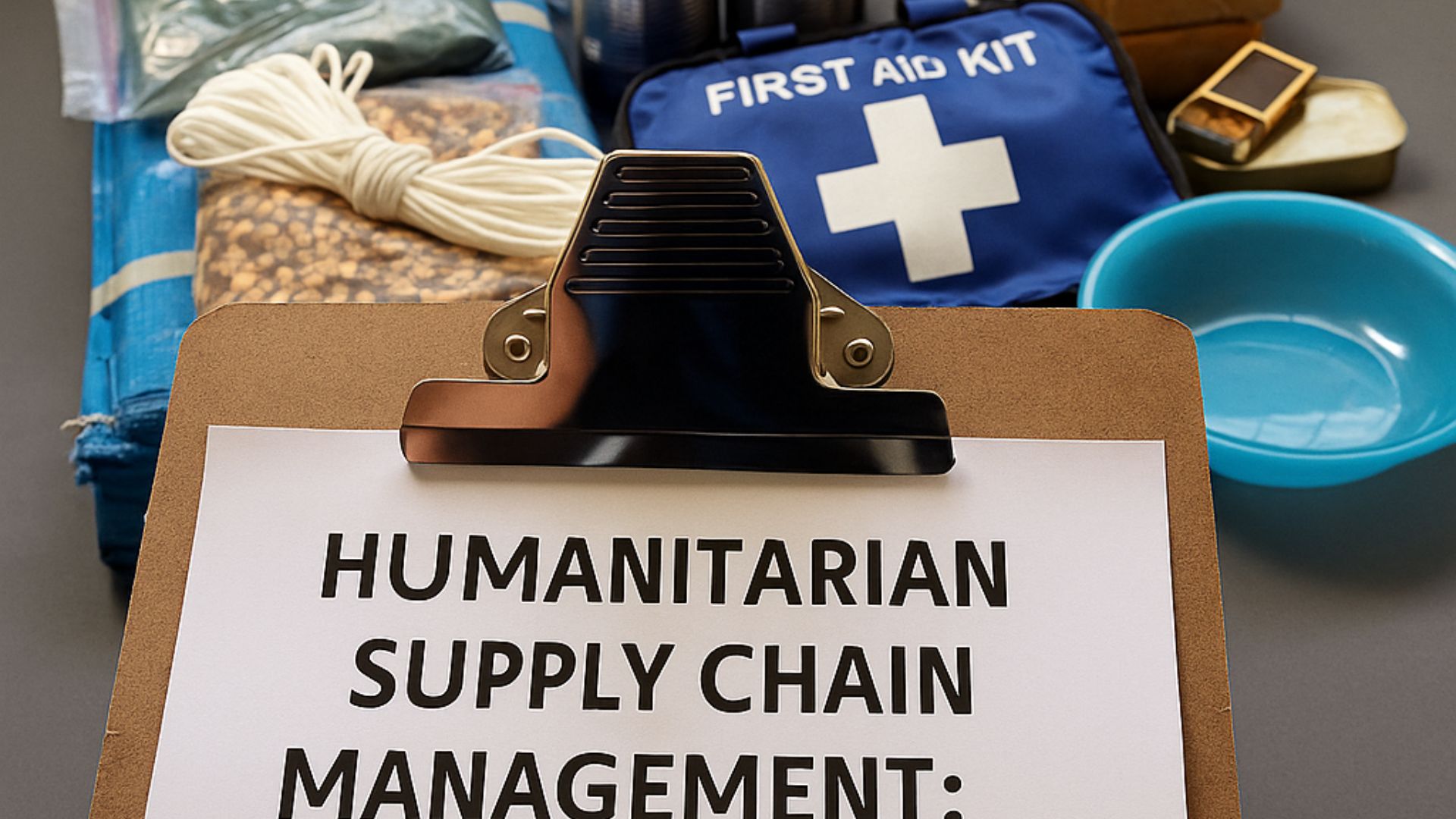Table of Contents
Toggle-Dr Sai Kishore Bhandevupurapu
Hurricanes, earthquakes, Floods, man-made calamities, etc. create a lot of chaos and loss of life and property. Such unfortunate events have reminded us, time and again, of the devastating impact disasters can have on human life and monuments. Despite best efforts at prevention and preparedness, crises—whether natural or man-made—demand immediate and well-coordinated responses. In such moments, the spotlight shifts to swift rescue, damage control, and long-term resilience-building. Firefighters, paramedics, disaster relief teams—everyone must act in unison. Behind the scenes, however, one crucial engine powers these efforts: the humanitarian supply chain.
What Is Humanitarian Supply Chain Management (HSCM)?
Humanitarian Supply Chain Management (HSCM) involves the strategic planning, implementation, and control of the flow of goods, services, and critical information from origin to point of need. Its objective is clear: to support those affected by crises—be it a natural disaster, armed conflict, or health emergency—by delivering essential items like food, water, medicine, clothing, and shelter in the fastest and most efficient way possible.
While HSCM shares some operational similarities with commercial supply chains—such as procurement, storage, and transportation—the context in which it operates makes it fundamentally different. Humanitarian supply chains are shaped by uncertainty, urgency, resource constraints, and a heightened focus on saving lives rather than optimizing profits.
Key Pillars of an Effective Humanitarian Supply Chain
- Preparedness and Planning – Anticipating potential threats and mapping response strategies.
- Sourcing and Procurement – Rapid and ethical acquisition of life-saving resources.
- Warehousing and Inventory Management – Ensuring availability without overstocking.
- Transportation and Distribution – Navigating difficult terrains under pressing timelines.
- Information Flow – Reliable, real-time communication across stakeholders.
Complex Collaboration in High-Stakes Environments
Unlike commercial supply chains that often rely on streamlined vendor networks, humanitarian supply chains must work across complex ecosystems. This includes governments, NGOs, local communities, international aid agencies, logistics providers, healthcare professionals, and volunteers. Coordination, trust, and seamless information exchange become not just helpful—but essential.
To tackle this complexity, HSCM professionals use specialized tools like rapid needs assessments, agile procurement methods, and decentralized storage strategies. Timely and accurate information is often the lifeline of successful operations, ensuring resources reach those in need without duplication or delay.
Technology as an Enabler in Humanitarian Logistics
The integration of emerging technologies is revolutionizing humanitarian logistics. Artificial Intelligence (AI) now aids in disaster prediction and response optimization—as seen in the Uttar Pradesh government’s AI-based crowd management at the Maha Kumbh Mela. Internet of Things (IoT), blockchain, and fuzzy logic enable transparent, efficient tracking of goods and personnel across fragile environments.
Innovations like drones and autonomous vehicles are making last-mile delivery possible even in regions cut off by floods, earthquakes, or infrastructure collapse. These tools are transforming how quickly and precisely aid can be delivered to ground zero.
The Critical Role of Information in Crisis Response
In chaotic situations, misinformation can be as dangerous as the disaster itself. Accurate, real-time communication is central to relief operations. A compelling example was the use of digital tools during the recent Turkey earthquake—where location data and situational updates shared via social media and mobile apps helped responders coordinate with unprecedented speed and precision.
Conclusion: The Human Face of Supply Chain Excellence
Humanitarian Supply Chain Management is where the principles of logistics meet the imperative of empathy. It embodies the agility, precision, and coordination of commercial SCM, but with a human-centric mission—to alleviate suffering, restore dignity, and accelerate recovery.
In a world facing increasing environmental and geopolitical disruptions, investing in HSCM capabilities is not just strategic—it’s essential.


